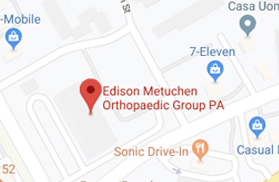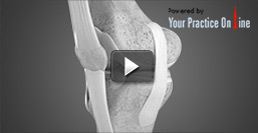Minimal Access Surgical Technology Transforaminal Lumbar Interbody Fusion
Our spine is made up of small bony segments called vertebrae. These vertebrae are categorized into cervical or neck vertebrae, thoracic (upper back) and lumbar (lower back). Cushioning discs present between each vertebrae act as shock absorbers. A cylindrical bundle of nerve fibers called the spinal cord passes through the entire vertebral column and branches out to the various parts of our body. Any damage or deformity to the bones of the vertebral column or to the disks present between the vertebrae can damage these nerves, leading to pain in the body part that the nerve supplies.
Transforaminal lumbar interbody fusion (TLIF) is a minimally invasive fusion of the vertebrae of the lumbar region (lower back). It is designed to provide stability to the spine and treat back and leg pain.
Indication
Transforaminal lumbar interbody fusion is indicated for:
- Degenerative Disc Disease: Wearing out of the intervertebral discs with age
- Scoliosis: Abnormally curved spine
- Spinal Stenosis: Narrowing of the spinal canal
- Spondylolisthesis: Forward dislocation of one vertebra over the other
- Fractures
- Infections
- Tumors
Surgical procedure
Your surgeon may recommend a TLIF when conservative measures (rest, physical therapy, and medications) fail to relieve your back and leg pain.
TLIF usually takes about 3 to 6 hours depending on the number of spinal segments treated. It is performed under general anesthesia so you will be asleep throughout the procedure. You will be given preoperative antibiotics to prevent infection, and will be placed in the prone position (lying on your stomach).
X-ray is used to confirm the location of the diseased segment. Your surgeon will then create a couple small incisions on your back. Your back muscles are separated and held in place with tubular retractors in order to clearly expose the diseased part of your spine.
Your surgeon then removes the lamina (roof of the vertebrae) to allow better visualization of the nerve roots. Your surgeon will then trim or remove the facet joints providing more space to the nerve roots. The nerve roots are then protected and gently moved aside. The diseased disk material is then removed. A disk implant known as a spacer made of bone, carbon-fiber, titanium, or a polymer is then inserted into the empty disc space. The implant provides proper disk height and acts as a scaffold for the new bone to grow. Your surgeon will then place small screws or rods in the upper and lower vertebral bodies to provide stability during the healing process. X-rays are then taken to document the correct location of the spacer. The retractors are removed, releasing the muscles to their normal position. The tissue layers are closed with sutures, the incisions closed using stitches or surgical staples, and a sterile bandage is applied over the surgical site. In time, the bone graft will fuse to create a solid bone.
Post-Operative Care
Most patients are able to go home in 2 to 3 days after the TLIF procedure. Mild pain is normal, for which you will be prescribed pain medications. You will be advised to wear a brace for three months after your surgery to support you while standing and walking. Physical Therapy and Occupational Therapy will instruct you on how to get in and out of bed properly and walk independently. You should not bend or twist at your waist or lift more than 5 pounds for 4 to 6 weeks until your back muscles are stronger and your pain subsides after your procedure. You may shower immediately after your procedure, but necessary precautions need to be taken to keep your surgical wound clean and dry. You may return to light duties 2 to 3 weeks after your surgery depending on your pain level. Moderate level work and light recreational activities are allowed 3 months after your surgery.
Advantages
One of the major advantages of TLIF is that it causes relatively less damage to the spinal structures which helps maximize the stability of the fusion. As TLIF is a minimally invasive procedure, the operative time, hospital stay, pain, blood loss, and risk of nerve and muscle injuries are reduced.
Risks and complications
As with any procedure, TLIF is associated with certain risks and complications including:
- Formation of blood clots or deep vein thrombosis
- Improper fusion of the implant
- Injury to adjacent tissues
- Nerve or spinal cord damage
- Infection
Other Spine List
- Normal Anatomy of the Spine
- Back Pain
- Neck Pain
- Spine Trauma
- Vertebral Fractures
- Spine Injections
- Spinal Deformity Surgery
- Posterior Lumbar Decompression with Fusion
- Lumbar Microdiscectomy
- Spinal Cord Stimulator
- Anterior Cervical Decompression with Fusion
- Corpectomy
- Kyphoplasty
- SI joint fusion
- Oblique Lumbar Interbody Fusion
- Direct Lateral Interbody Fusion
- Interlaminar Lumbar Instrumented Fusion
- Lumbar Epidural Steroid Injection
- Laminectomy (Cervical) with Fusion
- Posterior Lumbar Interbody Fusion
- Peripheral Nerve Surgery
 Menu
Menu






